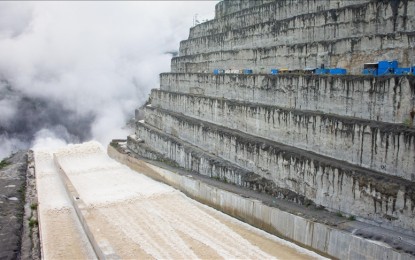ANKARA — China has begun construction of what will become the world’s largest hydropower project, situated in the remote Yarlung Zangbo River gorge in the southwestern Tibet region.
Premier Li Qiang launched the project during a groundbreaking ceremony in Nyingchi, part of the Xizang (Tibet) Autonomous Region.
Li described the initiative as a “project of the century” and emphasized the use of cutting-edge technologies, equipment, techniques, and materials to ensure high-quality construction.
Once completed, the project is projected to produce 300 billion kilowatt-hours (kWh) of energy per year—triple the output of China’s Three Gorges Dam, currently the world’s largest with a capacity of 88.2 billion kWh.
The development includes five cascade hydropower stations, with an estimated total investment of 1.2 trillion yuan (approximately $167.8 billion).
The launch event was attended by government officials, engineers, and local residents, highlighting the project’s national significance.
The hydropower complex is expected to play a vital role in China’s efforts to meet its climate goals, including peaking carbon emissions by 2030 and achieving carbon neutrality by 2060.
Yarlung Zangbo River
The Yarlung Zangbo River, also known as the Brahmaputra River, is one of the longest rivers in Asia, originating in Tibet and flowing through India and Bangladesh. It holds great cultural and religious significance in Tibetan Buddhism, with its valley considered the cradle of Tibetan civilization. The river is also notable for the Yarlung Zangbo Grand Canyon, one of the deepest and longest canyons in the world.
Tibet
Tibet, often called the “Roof of the World,” is a high-altitude region in the Himalayas with a rich Buddhist heritage and a unique cultural identity. Historically an independent kingdom, it was incorporated into China in the 1950s, though its political status remains disputed. Known for its stunning landscapes, ancient monasteries like the Potala Palace, and spiritual traditions, Tibet remains a symbol of resilience and cultural preservation.
Xizang (Tibet) Autonomous Region
The **Xizang (Tibet) Autonomous Region** is a culturally and historically significant area in southwestern China, known for its breathtaking Himalayan landscapes and deep-rooted Buddhist traditions. Established as an autonomous region in 1965, it has been an integral part of China for centuries, with a rich history tied to Tibetan Buddhism and the former Tibetan feudal system. Today, it is a vibrant region where traditional Tibetan culture is preserved while modern development progresses under China’s policies.
Nyingchi
Nyingchi, located in southeastern Tibet, is known for its stunning natural beauty, including lush forests, snow-capped peaks, and the scenic Yarlung Tsangpo River. Historically, it has been an important cultural and trade hub along the ancient Tea-Horse Road, connecting Tibet with Sichuan and Yunnan. The region is also home to diverse ethnic groups, such as the Monpa and Lhoba people, who preserve unique traditions and festivals.
Three Gorges Dam
The Three Gorges Dam, located on the Yangtze River in China, is the world’s largest hydroelectric power station by installed capacity. Completed in 2006 after decades of planning and construction, it was built to control flooding, generate clean energy, and improve river navigation. While it has brought significant economic benefits, the dam has also faced criticism for its environmental impact and displacement of over a million people.






